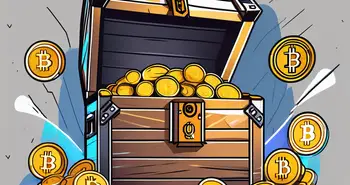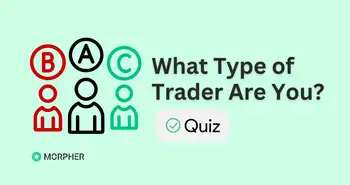Yield Farming vs Staking: What’s Better?

In the world of decentralized finance (DeFi), two popular ways to earn rewards on cryptocurrencies stand out: yield farming and staking. Both methods allow you to generate passive income, yet they have distinct characteristics that might suit different types of investors. In this article, we’ll explore the ins and outs of each approach and help you determine which might be the best fit for you.
Understanding the Basics of Yield Farming
Yield farming is akin to providing liquidity to a decentralized finance platform. By unlocking the potential of your assets, you can earn rewards, often in the form of interest or additional tokens.
Think of yield farming like a farmer planting a variety of crops. The more you plant, the bigger your harvest, but it also requires attention and a keen understanding of the environment. Just as a farmer must monitor weather patterns and soil conditions, yield farmers must stay informed about market trends and the performance of various DeFi protocols to maximize their returns.
What is Yield Farming?
In essence, yield farming involves lending your cryptocurrencies to others through smart contracts on a blockchain. This process generates returns based on the amount of crypto you’ve lent and the interest agreed upon.
For example, if you have Ethereum and provide it to a decentralized platform, you might earn a token in return, often referred to as a liquidity provider token. This token represents your stake in the pool and can often be used in additional farming activities to earn even more rewards. The ecosystem is dynamic, with new projects emerging regularly, which can lead to innovative farming strategies and opportunities for savvy investors.
How Does Yield Farming Work?
To start yield farming, you typically deposit your cryptocurrencies into a designated liquidity pool. The more liquidity provided, the better the platform can operate.
Your assets are then borrowed by other users for trading, lending, or other DeFi activities, and you earn a share of the transaction fees or interest charged to these borrowers. Some platforms even incentivize you with additional tokens, adding another layer to your earnings potential. This intricate web of lending and borrowing creates a vibrant marketplace where users can leverage their assets for maximum yield, but it also necessitates a thorough understanding of the risks involved.
Pros and Cons of Yield Farming
- Pros:
- High potential returns: Yield farming can provide annual percentage yields (APY) that far exceed traditional savings accounts.
- Diverse Opportunities: Multiple platforms allow you to switch your liquidity for different reward systems, maximizing returns.
- Flexibility: You can often withdraw your funds at any time.
- Cons:
- High risk: Yield farming can be complex, and improper management can lead to significant losses.
- Impermanent loss: If the value of your deposited assets fluctuates, it can result in reduced returns.
- Smart contract risk: If a smart contract is poorly coded, it could be exploited, leading to the loss of funds.
Moreover, the landscape of yield farming is continually evolving, with new protocols and innovations emerging at a rapid pace. This constant change can provide lucrative opportunities but also adds layers of complexity that require diligent research and risk assessment. As yield farmers navigate this space, they may also encounter concepts like liquidity mining, where users are rewarded for providing liquidity to specific pools, further enhancing their earning potential.
Additionally, community governance plays a significant role in many DeFi platforms, allowing yield farmers to participate in decision-making processes regarding the future of the protocol. This engagement not only empowers users but also fosters a sense of community and shared purpose within the decentralized finance ecosystem. As more individuals become involved in yield farming, the collective knowledge and strategies will continue to grow, shaping the future of this innovative financial landscape.
Delving into the World of Staking
Staking is often viewed as a more straightforward way to earn passive income compared to yield farming. Essentially, staking involves locking up your cryptocurrencies in a wallet to support the security and operations of a blockchain network.
Much like putting money in a savings account, your stake contributes to the network’s stability while earning you rewards in return.
What is Staking?
Staking is the process of participating in consensus mechanisms, such as proof of stake. By locking up your tokens, you help validate transactions and maintain the network, and in return, you earn new tokens.
It’s similar to voting in an election; by participating, you have a say in where things are heading, and the network rewards your engagement.
How Does Staking Work?
To stake your coins, you typically need to hold them in a wallet that supports staking. Over time, your staked tokens generate rewards, usually paid out periodically. These rewards can often be reinvested, allowing your earnings to compound.
For instance, if you stake 1,000 tokens with an annual yield of 10%, you would earn 100 tokens by the end of the year, contributing to your overall crypto portfolio.
Pros and Cons of Staking
- Pros:
- Low complexity: Staking usually requires less technical know-how compared to yield farming.
- Regular income: Staking rewards are often more predictable.
- Support for the network: Your contribution helps maintain the blockchain’s health.
- Cons:
- Lower potential returns compared to yield farming in some scenarios.
- Lock-up periods: Some staking comes with minimum periods where your assets cannot be withdrawn.
- Market volatility: The value of your staked assets can fluctuate, impacting your overall returns.
Comparing Yield Farming and Staking
Now that we have explored yield farming and staking individually, let’s compare the two directly.
Similarities Between Yield Farming and Staking
Both yield farming and staking allow you to earn passive income on your cryptocurrencies, making them appealing options for investors. Furthermore, both contribute to the underlying protocols, offering essential liquidity and security.
Moreover, users have the flexibility to exit their positions, although the timing may differ based on the type of platform used.
Differences Between Yield Farming and Staking
The primary difference lies in risk and complexity. Yield farming typically involves more intricate strategies and higher risks, like impermanent loss and smart contract vulnerabilities. On the other hand, staking is generally regarded as simpler and lower-risk but may come with reduced returns.
Additionally, yield farming can offer incentives in the form of multiple tokens, while staking rewards are usually straightforward and predictable.
Factors to Consider When Choosing Between Yield Farming and Staking
When deciding between these two options, it's crucial to evaluate several factors related to your financial situation and investment goals.
Risk Tolerance
Your personal risk tolerance plays a pivotal role in this decision. If you are comfortable taking on greater risks in pursuit of higher returns, you might lean toward yield farming. Conversely, if you prefer a steadier income with less risk, staking might be more your style.
Potential Returns
Consider what you hope to gain from your investments. Yield farming often comes with the promise of higher APYs, but these can fluctuate wildly. Staking typically offers more stable, but often lower, returns. Calculating your expected returns based on each option's historical performance is beneficial.
Time Commitment
Finally, think about how much time and effort you’re willing to invest. Yield farming can require consistent monitoring and strategy adjustments, while staking usually involves a more laid-back approach. Your lifestyle and investment philosophy should dictate the best choice for you.
Frequently Asked Questions (FAQ)
What is the primary difference between yield farming and staking?
Yield farming is more complex and often riskier, while staking is generally simpler and more stable in terms of rewards.
![]()
Can I lose money in yield farming?
Yes, yield farming carries risks such as impermanent loss and smart contract vulnerabilities, which can result in financial loss.
Which is better for a beginner: yield farming or staking?
Staking is often recommended for beginners due to its lower complexity and steadier returns, while yield farming might be better suited for more experienced investors.
Are there any tax implications for yield farming and staking?
Yes, most countries consider rewards from both yield farming and staking as taxable income. Always consult a financial advisor for advice tailored to your situation.
Ultimately, the best choice between yield farming and staking hinges on your risk tolerance, desired returns, and time commitment. Evaluate your circumstances carefully to maximize your potential in the cryptocurrency realm!
As you consider the benefits of yield farming and staking in your investment strategy, explore the innovative world of Morpher.com. Our platform revolutionizes the way you trade by harnessing blockchain technology, offering zero fees, infinite liquidity, and the ability to trade a vast array of assets from cryptocurrencies to NFTs. With Morpher, you can start with fractional investing, take advantage of 10x leverage, and enjoy the safety of a non-custodial wallet. Ready to elevate your trading experience? Sign Up and Get Your Free Sign Up Bonus today, and join the future of investing with Morpher.

Disclaimer: All investments involve risk, and the past performance of a security, industry, sector, market, financial product, trading strategy, or individual’s trading does not guarantee future results or returns. Investors are fully responsible for any investment decisions they make. Such decisions should be based solely on an evaluation of their financial circumstances, investment objectives, risk tolerance, and liquidity needs. This post does not constitute investment advice.

Painless trading for everyone
Hundreds of markets all in one place - Apple, Bitcoin, Gold, Watches, NFTs, Sneakers and so much more.

Painless trading for everyone
Hundreds of markets all in one place - Apple, Bitcoin, Gold, Watches, NFTs, Sneakers and so much more.








